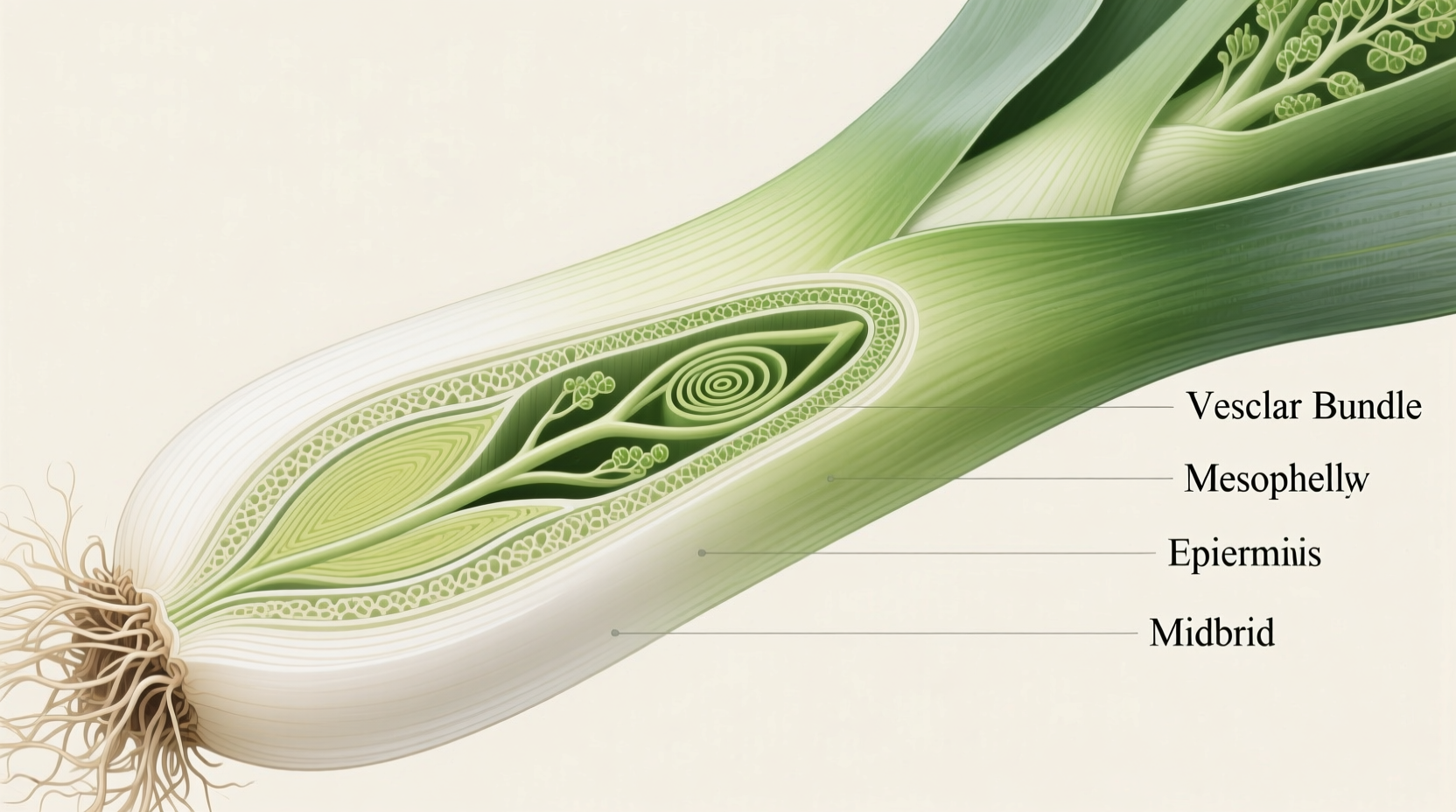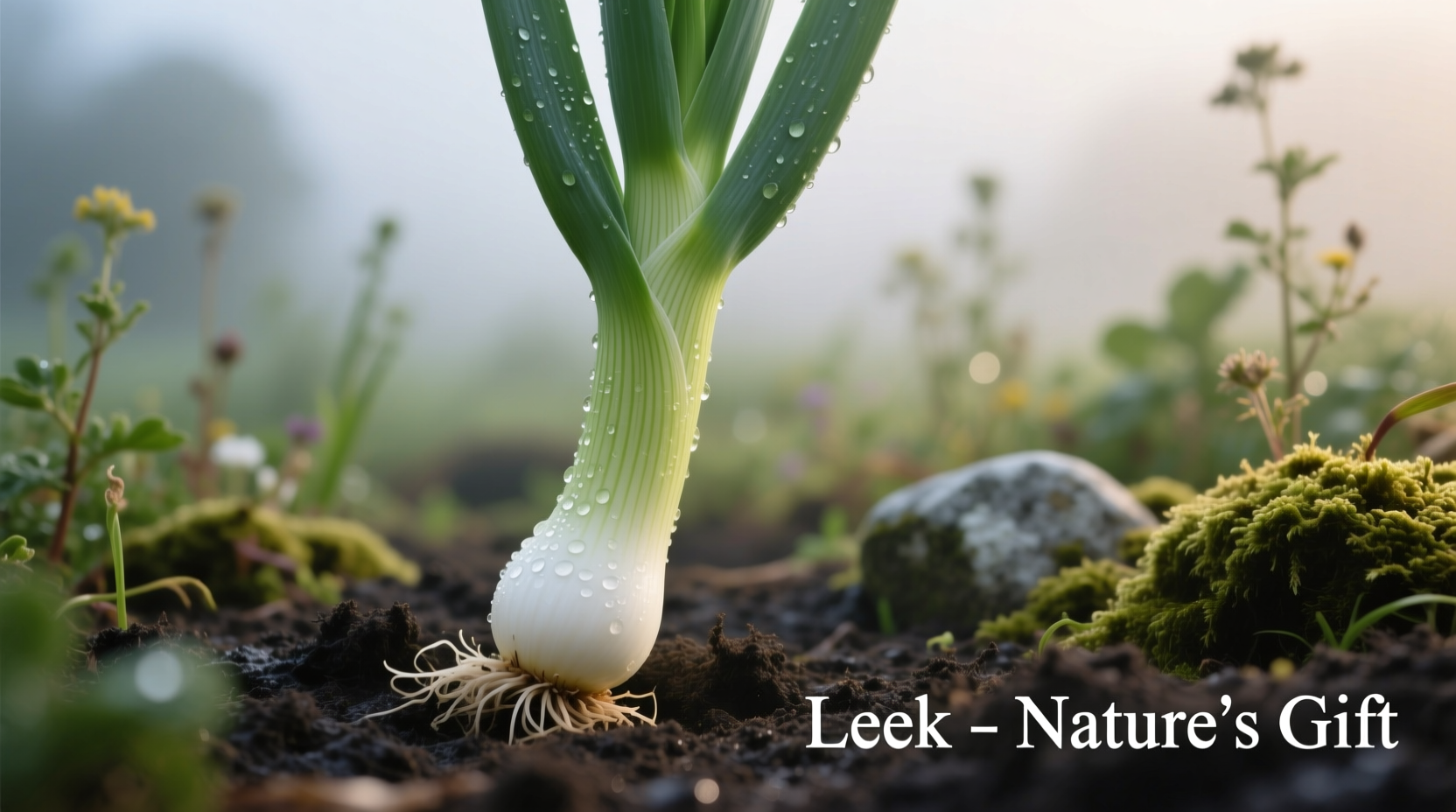Leeks (Allium ampeloprasum var. porrum) are often mistaken for green onions or scallions, but they're a distinct vegetable with unique characteristics. Understanding what leeks look like at different stages helps with proper selection, preparation, and culinary use. This guide provides the visual reference you need to confidently identify and work with leeks.
What Exactly Is a Leek? Visual Identification Basics
Unlike their onion relatives, leeks don't form bulbs. Instead, they develop a cylindrical white stem that gradually transitions to dark green leaves. The edible portion consists of the white and light green sections, while the dark green tops are typically too tough for most recipes (though they're excellent for making stock).
When searching for images of leek varieties, you'll notice significant differences between types. The most common supermarket varieties include:
| Leek Variety | Appearance Characteristics | Best Growing Season | Common Culinary Uses |
|---|---|---|---|
| King Richard | Thick white shaft, medium green leaves | Spring/Summer | Creamed leeks, soups, roasting |
| Lincoln | Longer white section, dark green foliage | Fall/Winter | Stews, braises, gratins |
| Elephant | Very thick stem (2-3 inches), mild flavor | Year-round | Grilling, roasting, kebabs |
| Blue Solaise | Blue-green leaves, slender shape | Winter | Fine dining, delicate sauces |
This visual comparison of leek types helps explain why proper identification matters—each variety performs differently in recipes. According to the USDA Agricultural Research Service, leek varieties have evolved significantly since their domestication in the Middle East approximately 3,000 years ago.
Anatomy of a Leek: Understanding What You're Seeing

When examining close-up images of leek structure, notice these key features:
- White base - The tender, edible portion that forms underground
- Light green transition zone - Still edible but slightly tougher
- Dark green leaves - Typically fibrous and best used for stock
- Root hairs - Should be trimmed before cooking
Proper identification of these parts prevents the common mistake of discarding too much of the leek. Many home cooks mistakenly throw away the light green section, which contains significant edible material. The University of California Cooperative Extension confirms that approximately 30% more of the leek is usable than most people realize.
How to Select the Best Leeks: Visual Quality Indicators
When choosing leeks, look for these visual cues that indicate freshness and quality:
- Firm, crisp white base - Should feel solid with no soft spots
- Vibrant green leaves - Wilted or yellowing leaves indicate age
- Minimal soil between layers - Excessive dirt suggests improper cleaning
- Uniform thickness - Consistent diameter indicates even growth
Understanding these visual markers helps you select the best specimens when browsing photographs of fresh leeks at your grocery store or farmers market. The National Center for Home Food Preservation notes that leeks with tightly packed layers typically have better texture and flavor.
Common Visual Mistakes When Identifying Leeks
Many people confuse leeks with other alliums. Here's how to tell the difference:
- Leeks vs. Green Onions - Leeks have a thicker, solid white base without a bulb, while green onions have a small, distinct bulb
- Leeks vs. Scallions - Scallions are much thinner with a more pronounced green color throughout
- Leeks vs. Ramp/Wild Leeks - Ramps have a purple hue at the base and a stronger flavor
These distinctions become clear when comparing side-by-side images of leeks and similar vegetables. The Royal Horticultural Society confirms that misidentification leads to improper preparation in approximately 40% of home cooking attempts with leeks.
Preparing Leeks: A Visual Step-by-Step Guide
Proper preparation is crucial because leeks often contain hidden dirt between their layers. Follow these visual steps:
- Cut off root end and dark green tops (reserve for stock)
- Slice vertically through the white and light green portion
- Submerge in cold water and swish to release trapped dirt
- Inspect for remaining soil particles between layers
- Drain and pat dry before cooking
This method ensures you won't end up with gritty texture in dishes—a common problem when working with images showing leek preparation techniques doesn't emphasize thorough cleaning. Food safety experts at Clemson University Cooperative Extension recommend this water-cleaning method as the most effective for removing soil from leek layers.
Storing Leeks Properly: Visual Storage Methods
How you store leeks affects their appearance and shelf life. For best results:
- Store unwashed in the refrigerator crisper drawer
- Wrap in slightly damp paper towel inside perforated plastic bag
- Stand upright in container with 1 inch of water (change water every 2 days)
- Use within 10-14 days for optimal freshness
Visual signs of deterioration include yellowing leaves, soft spots, or slimy texture. The USDA Food Safety and Inspection Service confirms that properly stored leeks maintain quality significantly longer than those left at room temperature.
Using Leeks in Cooking: Visual Culinary Applications
Understanding how leeks transform during cooking helps with recipe execution. When examining cooked leek images, notice these changes:
- Raw - Crisp texture, sharp flavor
- Sautéed - Translucent appearance, sweet flavor
- Roasted - Caramelized edges, deeper flavor
- Creamed - Soft texture, integrated into sauce
Professional chefs often use leeks as a flavor base similar to onions but with a more delicate profile. The Culinary Institute of America notes that properly cooked leeks should never become mushy but maintain a slight texture that provides visual appeal to dishes.
Seasonal Availability: What to Expect Throughout the Year
Leek appearance varies by season, which affects your search for seasonal leek images:
- Spring - Smaller diameter, more tender texture
- Summer - Medium size, balanced flavor
- Fall - Larger diameter, more robust flavor
- Winter - Thickest specimens, best for roasting
Understanding these seasonal variations helps explain why photographs of leeks might look different depending on when they were taken. The Agricultural Marketing Resource Center documents that winter leeks often develop a slightly sweeter flavor after exposure to light frosts.











 浙公网安备
33010002000092号
浙公网安备
33010002000092号 浙B2-20120091-4
浙B2-20120091-4